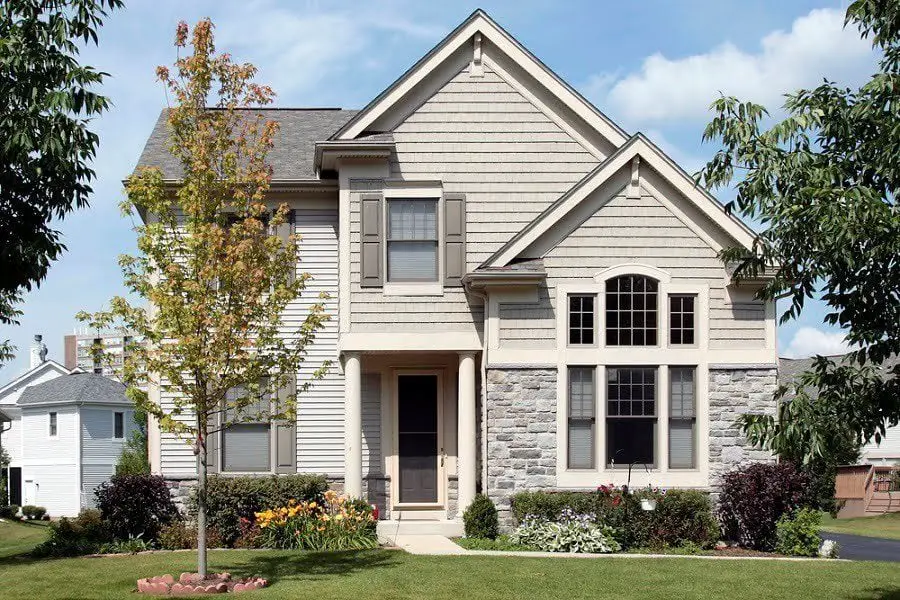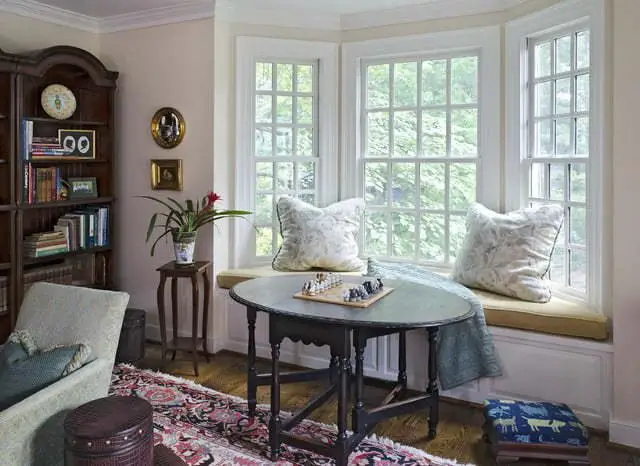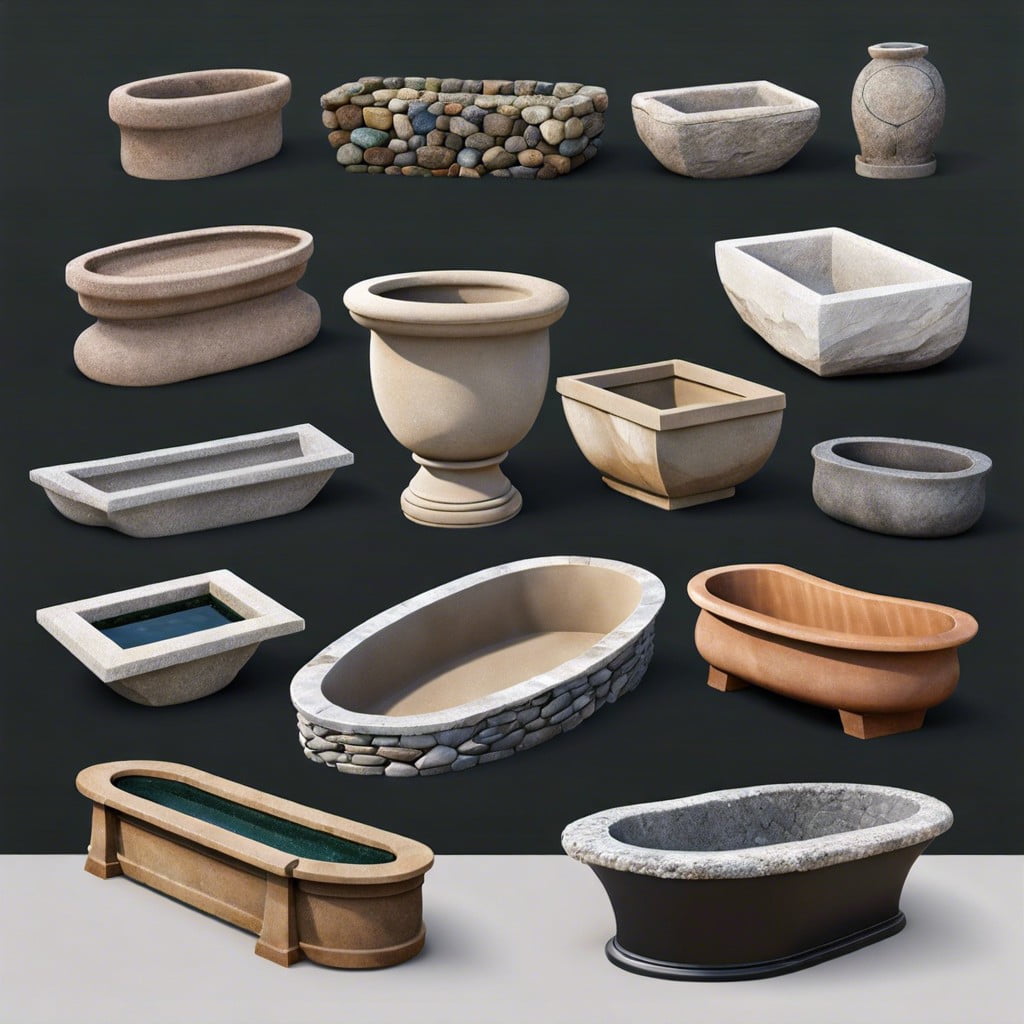Last updated on
Explore a myriad of exterior stone siding ideas that can transform your home into an architectural masterpiece with timeless appeal.
Exterior stone siding offers a unique blend of durability and aesthetics, making it a popular choice for homeowners seeking to enhance their property’s curb appeal. We have consulted with the Roofer Digest to delve into a variety of exterior stone siding ideas, discussing different types of stone, design trends, and installation techniques.
Whether you’re interested in a traditional look with natural stone or a modern approach with manufactured stone veneer, the following sections will provide comprehensive insights to guide your decision-making process.
Read on to explore the world of stone siding and find the perfect design for your home.
Stacked Stone Veneer Panels
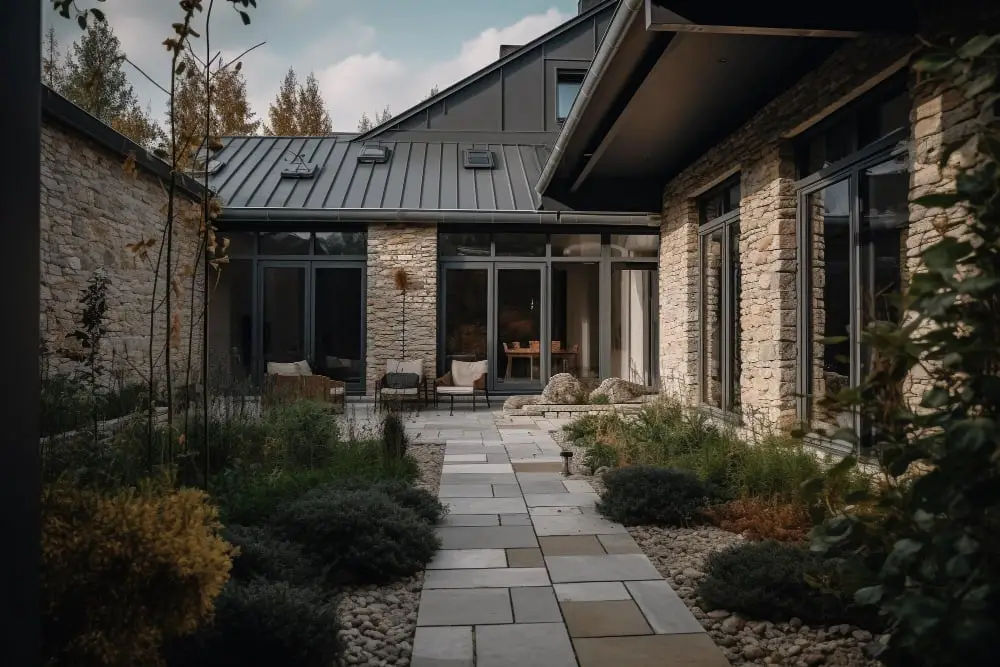
With their refined appearance and low-maintenance aspect, stacked stone veneer panels offer an exemplary choice. Versatility is a huge advantage, allowing homeowners to apply these panels equally well to both interior and exterior walls.
Key ideas include:
- Choices ranging from russet hues to cool grays, lending itself to various design aesthetics.
- Veneers fashioned from real stone or manufactured versions that mimic the real deal’s textures and colors.
- Diverse sizes and formats, from large sheets to smaller panels.
- Dry stack installation gives an authentic, rustic visual without the need for mortar.
- The ability for the stone veneers to be cut or shaped as needed, a big plus for tricky wall spaces.
Homeowners can give their homes a character makeover by following these steps:
- Determine suitable areas for the stacked stone veneer panels. High-visibility walls or sections around windows and doors make excellent choices.
- Source high-quality veneers from reputable suppliers, ensuring color consistency and thickness.
- Prepare the wall surface as required, ensuring a firm, flat, and clean base for the veneers.
- Apply the veneer panels according to the manufacturer’s instructions, taking care to space and arrange them for best visual effect.
- Finish and seal the installed veneer panels properly to maintain their durability and longevity.
Pebble Stone Siding
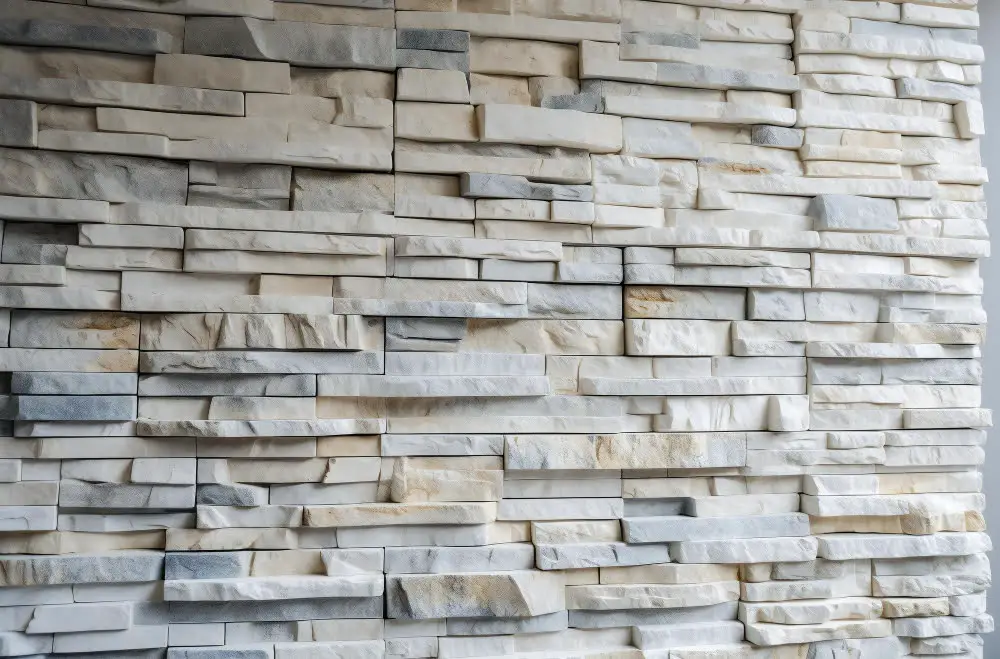
Popular for its unique, timeless look, pebble stone siding offers optimal endurance and durability, making it a preferred choice for many homeowners.
Pebble stone siding, inherently robust, is significantly resilient to harsh weather conditions. Be it scorching summers or frosty winters, this type of siding remains unaffected, ensuring long-lasting appeal for exteriors.
Being highly customizable, pebble stone siding offers the ability to curate a distinctly personal style for your home’s exterior. The size, color, and arrangement of the stones can be selected to perfectly match the home’s architectural style or the homeowner’s personal taste.
Environmentally friendly, pebble stone siding can be a wise choice for the eco-conscious homeowner. Manufactured from natural materials, it does no harm to the environment and is completely recyclable.
In terms of installation, the process is straightforward and can be done professionally or as a DIY project. It requires only cement and pebbles, along with some essential tools for attaching the pebbles to the siding.
Maintenance-wise, pebble stone siding demands minimal attention. An occasional water rinse is sufficient to sustain its fresh and lustrous appearance over time.
Budget considerations for pebble stone siding show it to be a cost-effective option in the long run, due to its impressive durability and minimal upkeep costs.
Sandstone Cladding

Heralded for its sturdy build and naturally occurring palette of earthy tones, Sandstone cladding holds a well-earned spot in the world of exterior design. It provides homeowners an opportunity to create a unique and inviting aesthetic with multiple benefits.
The ease of installation tops the list of many homeowners’ reasons for choosing sandstone. One can opt for professional fitting or take on a DIY project with a little bit of handy knowledge under their belt. Sandstone panels simply adhere to the structural wall, providing a fuss-free wrapping of rich texture.
The cladding’s durability is another major attraction. Capable of withstanding extreme weather conditions, it serves as a protective shell to your home. Its resilience to environmental degradation adds a layer of reassurance for the property owner, implying that the grandeur will last for many years to come. In effect, it contributes to long-term property value.
Not only structurally sound, sandstone can deliver a wide range of looks, from smooth and sophisticated to rustic and rugged. The variety of patterns and colors available offers limitless personalization options. One can choose to go with a uniform look or mix and match different shades and patterns for a more dynamic appearance.
In terms of maintenance, sandstone is relatively easy to care for. A simple wash-down with a hose and soft brush usually suffices to keep the stone looking fresh. For deeper cleaning, a mildewcide or stone-safe cleaner can be used.
Incorporating lighting into your sandstone cladding can significantly enhance its visual appeal. Strategically placed lights can illuminate the stone’s natural colors and create intriguing shadows, adding depth to the facade.
Therefore, incorporating sandstone cladding can be a smart move for homeowners looking to combine durability, style and easy maintenance in their exterior design.
Dark Slate Stone Siding
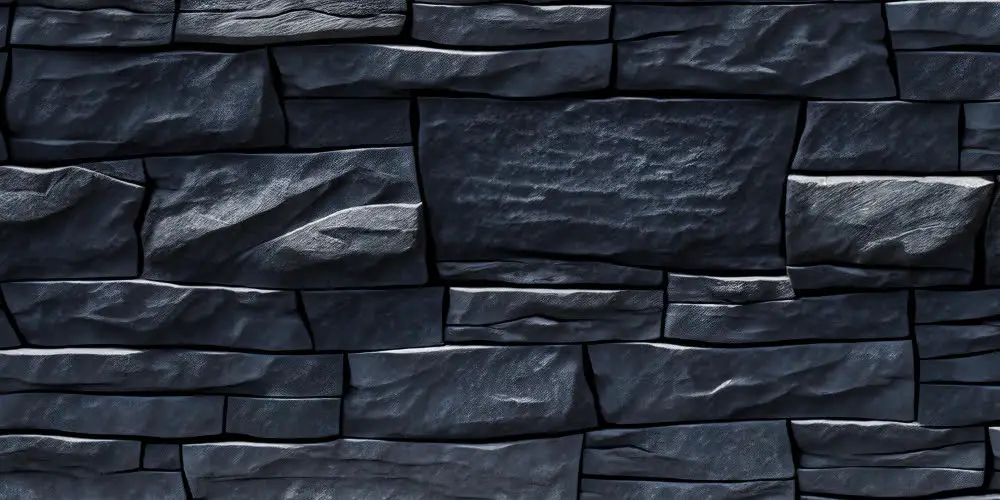
Dark slate stone siding delivers an array of stunning features. Its color, a deep, almost charcoal hue, offers a perfect backdrop for vividly colored doors and window frames. Despite its dark complexion, slate offers a warm, inviting look that can instantly boost a home’s curb appeal.
Being a natural material, slate promises durability and weather resistance. It can withstand extreme weather conditions, be it scorching summer heat or freezing winter cold, ensuring your exterior stays intact and attractive for years.
Utilizing dark slate stone siding emphasizes architectural details. Its texture can be utilized to highlight different architectural features of your home, like archways or columns, providing a visually pleasing contrast against smoother surfaces.
One of the main advantages of slate siding is its eco-friendliness. Slate is a sustainable material, meaning you are making an environmentally conscious choice when you opt for it.
Last but not least, maintenance is a breeze with slate siding. Simply power washing it every now and then can be sufficient to keep the siding looking clean and new.
You could consider hiring a professional for the installation process to ensure perfect alignment and secure fitting. This step cannot be overlooked as improper installation might lead to water seepage causing damage to the siding and the structure of your home.
So, whether you are renovating or constructing a new home, dark slate stone siding is a versatile and robust option.
Limestone Siding With Contrasting Trims
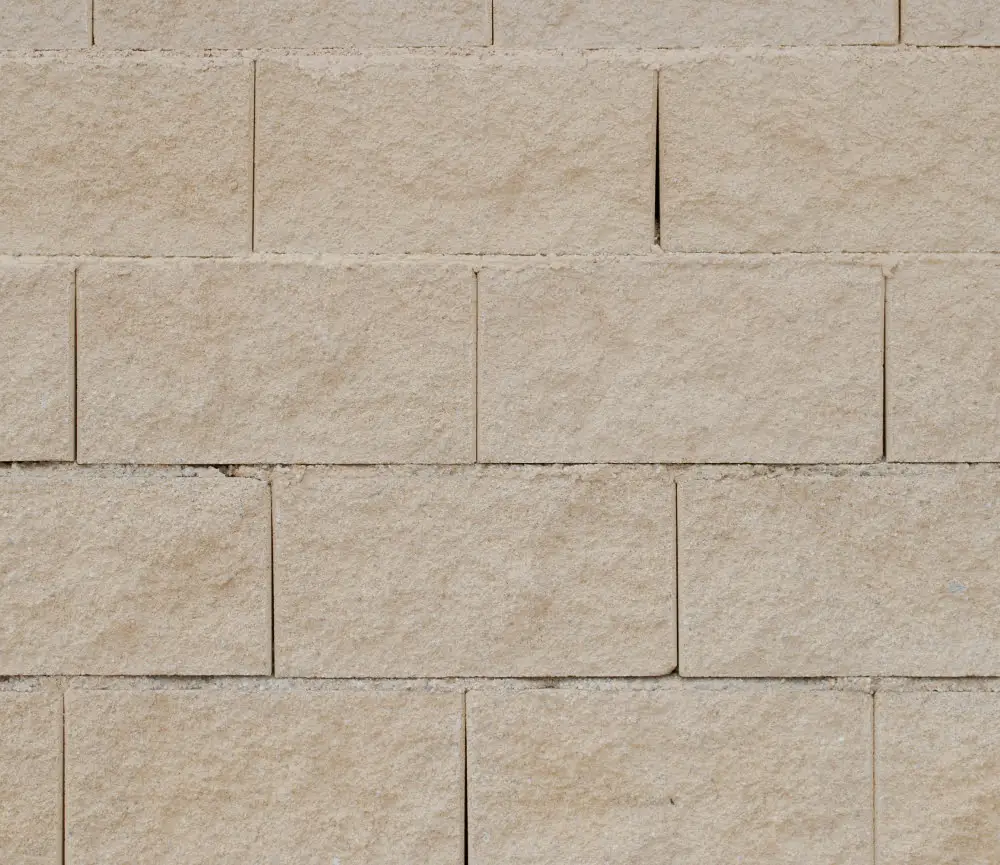
Limestone siding offers versatility with different shapes, sizes, and colors. From cobblestone to split-face, it brings a unique, classically elegant aesthetic to your home’s exterior. The most alluring aspect of choosing this material is the contrasting trim opportunities, using varied textures, hues, or patterns.
To make the most of this specific siding type, consider the following:
- Select a contrasting trim color: White trim provides a striking contrast against darker limestone.
- Opt for a different material for trim: Wood or metal can create an engaging interplay of textures.
- Use varied shapes: Curved trims can soften the essential linear layout of limestone siding.
- Add strategic lighting: Spotlighting or ambient lighting could emphasize the siding and the contrasting trims.
- Combine with other siding types: Limestone looks splendid when paired with brick or wood sidings for a tasteful, layered exterior.
Working with a professional installer can ensure precise, flawless installation and an exterior that draws the eyes and stands the test of time. Ensure the installer seals the limestone siding correctly to prevent moisture and weather-related damage. Proper maintenance extends the life and maintains the beauty of your limestone siding with contrasting trims.
Rustic Flagstone Siding

Bursting with resounding charm, rustic flagstone siding is an effortless way to infuse a home’s exterior with character. This kind of siding perfectly re-creates the appeal of a quintessential countryside abode. The earthy tones of the flagstones mingle harmoniously with the rugged texture, inviting a cozy feel that is synonymous with rustic elements.
Firstly, Flagstone is an incredibly durable material, coping admirably with various weather conditions. This resilience allows homes to stand strong against time, making flagstone siding a worthwhile long-term investment.
Secondly, the material offers versatility in spades. With a rich tapestry of shapes, sizes, and colors on offer, rustic flagstone siding enhances the aesthetic quotient of any architectural style. You can customize it to create your dream look – be it a coherent color scheme or an assortment of hues for a more eclectic effect.
Another enticing aspect is its minimal maintenance. A simple spray down with a hose will suffice to keep the siding looking fresh and bright.
Lastly, while the cost of flagstone siding can be higher upfront, the longevity and timeless aesthetic it offers adequately justifies the investment. A relatively simple installation process completes its list of advantages, making it an attractive siding option for many homeowners.
Remember, consider hiring a professional to install your siding. The precise placement of stones ensures maximum durability and visual appeal. Opting for a tested weatherproofing strategy is also pertinent, providing additional protection for your investment. Plus, keep an eye on moss growth – while it can add to the rustic charm, excessive moss may harm the stonework over time.
Natural Fieldstone Siding

A popular option for homeowners seeking to inject a dose of rugged beauty to their abodes, natural fieldstone siding boasts a distinctive aesthetic difficult to duplicate. Displaying naturally occurred shapes and a wide variety of colors, from subtle grays to fiery reds, such siding provides a unique look that complements a slew of architectural styles.
The key ideas surrounding natural fieldstone siding include:
- Uncompromised Authenticity: Fieldstones are essentially rocks collected from fields. They’re untouched and unprocessed, preserving their organic and raw look, making each stone unique.
- Wide Spectrum of Colors: Colors range from neutral grays and whites to vibrant reds and browns. The wide color range offers homeowners the ability to coordinate the siding with the rest of the house’s exterior scheme.
- Versatility: Whether your home is a grand country house or a cozy cottage, fieldstone siding can add a unique visual texture.
- Durability: Being natural, fieldstone is highly durable. With proper installation and maintenance, fieldstone siding can last for years.
- Design Conveniences: Fieldstone can be installed in different patterns to create various looks. Homeowners can choose to lay stones in a neat, linear fashion or aim for a more organic, irregular pattern.
Engaging professional help would be advisable to ensure proper, safe, and durable installation, with the added benefit of expert design advice for the best aesthetic outcome. Maintenance usually involves regular cleaning to avoid build-up of dirt and ensure the stones continue to look their best with time. Due to its naturally rough texture, a gentle approach is recommended when cleaning to avoid damage.
Colonial White Stone Cladding

Highlighting natural elements’ intrinsic beauty, Colonial white stone cladding presents a timeless choice for housing exteriors. This cladding type shares a subtle charm, mirroring the aesthetic appeal of traditional colonial homes.
Colonial white stone is renowned for its distinct white–gray tones. This coloring offers a versatile canvas for various architectural styles, right from classic to contemporary. A unique feature of this cladding is its neutral tone; an attribute letting it blend seamlessly with diverse color palettes and landscapes.
Thickness and pattern variety mark another advantage of this siding option. It’s available in thin veneers and full-thickness stone, enabling wide-ranging texture possibilities. The corner pieces come in L-shaped forms that fit snugly, creating a complete stone appearance.
Installing colonial white stone cladding demands careful planning and execution:
- Start by choosing between veneer or full-thickness stone as per your design and budgetary needs.
- Select a stone color that complements the overall exterior scheme.
- Plan for professional installation to ensure optimal results.
Its durability is unmatched, rendering it a long-lasting exterior choice. Given it’s resistant to weather changes and damage, maintaining the stone becomes a minimal task.
Hence, colonial white stone cladding provides a solution that marries aesthetic appeal with practical benefits, making it an option worth considering for your exterior design plans.
Quartzite Stone Siding
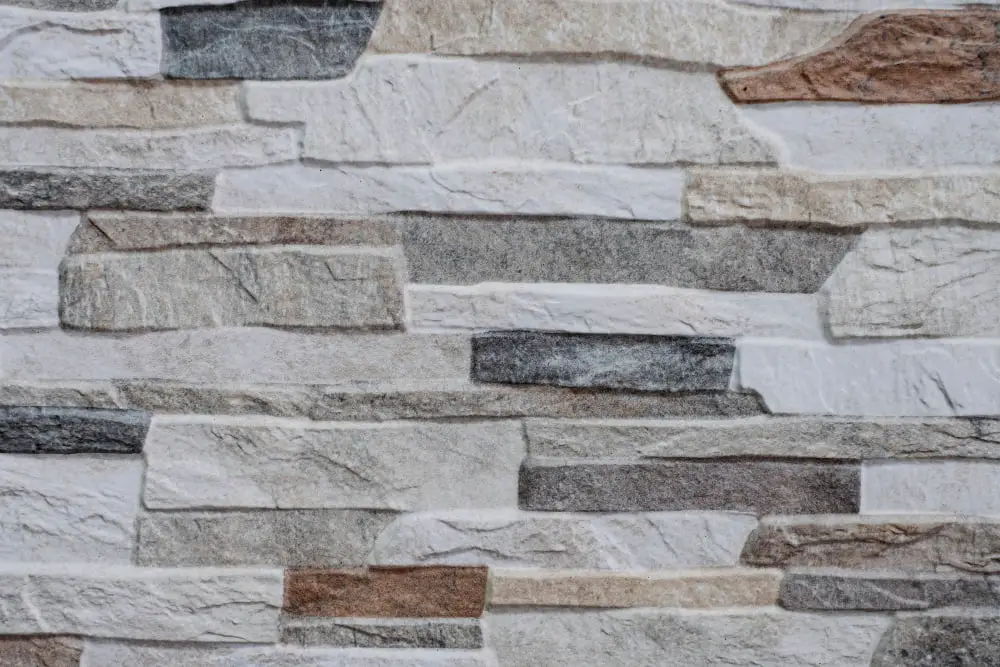
Quartzite, a naturally occurring metamorphic rock, offers impressive durability coupled with an aesthetic appeal that is hard to rival. It is an ideal choice for homeowners seeking a sophisticated and unique look for their home exterior.
Opting for quartzite stone siding can result in a bright, clean exterior appearance due to the rock’s light-refracting properties. The surface exudes an iridescent sheen in sunlight, lending an enchanting touch to the property.
A key advantage of quartzite siding is its low maintenance requirement. Tolerance to extreme weather conditions, resistance to scratches, and longevity are hallmarks of this siding material. Simply hosing off any accumulated dirt or debris is generally enough to keep it looking pristine.
It can be implemented in a variety of design formats according to homeowner preferences and architectural features of the property. Large slabs, stacked stones, interlocking panels, and split face are some of the popular installation styles.
Quartzite also offers the opportunity to make sustainable choices. It’s a naturally available, non-toxic material that can be locally sourced, reducing carbon footprints related to transport from distant locations.
Through professional installation, homeowners can ensure an even application and seamless blend into the architecture of their home, enhancing not only its curb appeal but also its resale value. The smart combination of beauty and strength that quartzite stone siding offers sets it apart as a compelling choice for discerning homeowners.
Mosaic Style Stone Siding

Emulating an art form dating back to ancient times, mosaic style stone siding offers a striking, highly decorative option for your home’s exterior. It involves the combination of small pieces of colored glass, stone, or other materials, affixed together to create compelling patterns or images.
This type of stone siding allows for a wide range of customization. Depending on your decorative aspirations, you could incorporate simple, abstract patterns or opt for intricate depictions of nature or geometric arrangements. The result is a vibrant and textured aesthetic that is sure to capture attention.
To achieve this dramatic look, you’ll need to acquire a variety of stone pieces in different colors and shapes. Ensure to create a detailed plan of your desired pattern before you start affixing the pieces to your exterior wall. Keep in mind that the smaller the individual stone pieces, the more complex and intricate your design can potentially be.
Opt for a waterproof adhesive designed for exterior stone installations to affix your pieces. Always start from the bottom and work your way up, taking care to maintain the integrity of your design pattern throughout the process. Once completed, you may want to apply a sealant to protect the mosaic from weather elements.
Mosaic style stone siding calls for careful planning and attention to detail, but the end result can truly make your home’s exterior a breathtaking statement piece.
Mixed Stone and Brick Siding

Mixed stone and brick siding is a fusion of tradition and elegance. Durability is one of its definitive qualities, combining the staunch strength of brick with the sprawling nature of stone, resulting in longevity and robust aesthetics.
This design concept merges the timeless character of natural stone with the charming appeal of brick. Selecting complementary or contrasting colors in stone and brick can dramatically enhance the visual appeal of any home.
Crafting this siding involves a careful selection of stone and brick variants. For a harmonious look, consider stones and bricks with similar textures and hues. Alternatively, an eclectic style can be achieved through an array of mismatched but visually appealing stone-brick combinations.
To implement, one can alternate rows of stone and brick, mix patterned blocks within a row, or design distinctive sections of the house using one material. For a detailed, substantial finish, it’s recommendable to consult with a professional installer.
In addition to serving as a robust protective barrier, this siding type also aids in energy conservation, contributing to the home’s thermal efficiency. Whether aiming for a cottage-like ambience, a rustic look, or a modern, sleek exterior, this siding type offers versatility and charm in abundance.
Ledgestone Panels
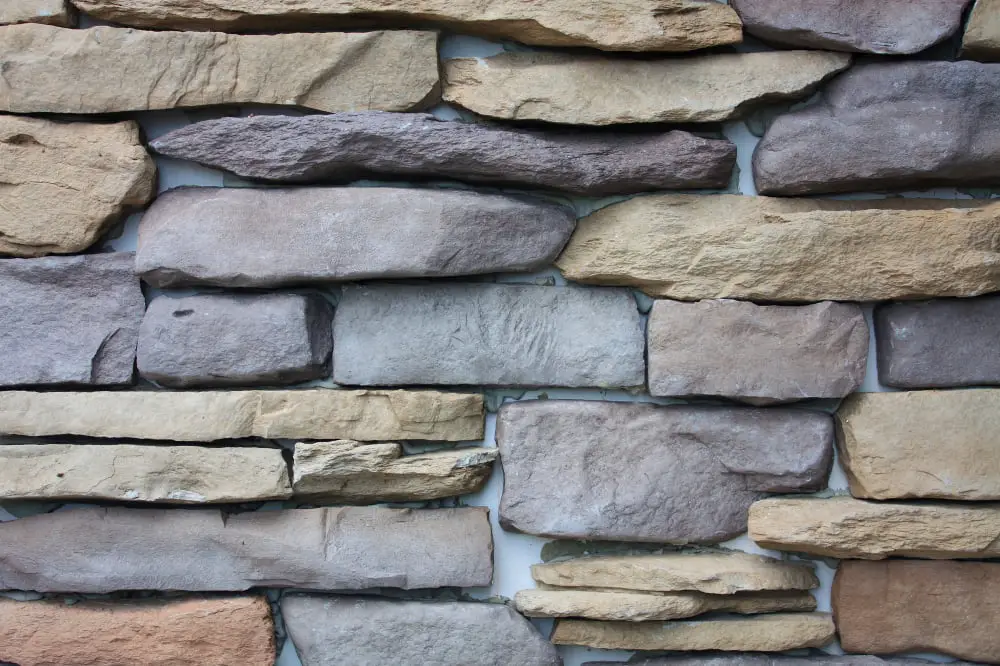
Ledgestone panels offer a rugged and structural aesthetic, characterized by their horizontal layout. Their appeal lies in the mix of varying depths, widths, and heights that deliver a textured, multi-dimensional appearance.
When selecting ledgestone for your home exterior:
- Opt for this siding for a modern-minimalist style due to its simple, clean lines.
- Consider the materials available. Natural stones like quartz, slate, or sandstone are common options, each lending a uniquely rustic charm.
- Keep in mind the color palette. Ledgestones come in a range of colors, from cool grays and whites for a more modern look, to warm beige and browns for a rustic effect.
- Understand that they require more meticulous installation due to their irregularity, which can be more labor intensive and therefore, more costly.
- Lastly, ledgestone panels excel in both durability and maintenance, standing up to harsh elements while only needing occasional power washing to preserve their look.
Whether it is a total exterior transformation or a small accent detail, ledgestone panels offer an effective approach to enhancing curb appeal.
Ashlar Pattern Gray Stone Siding
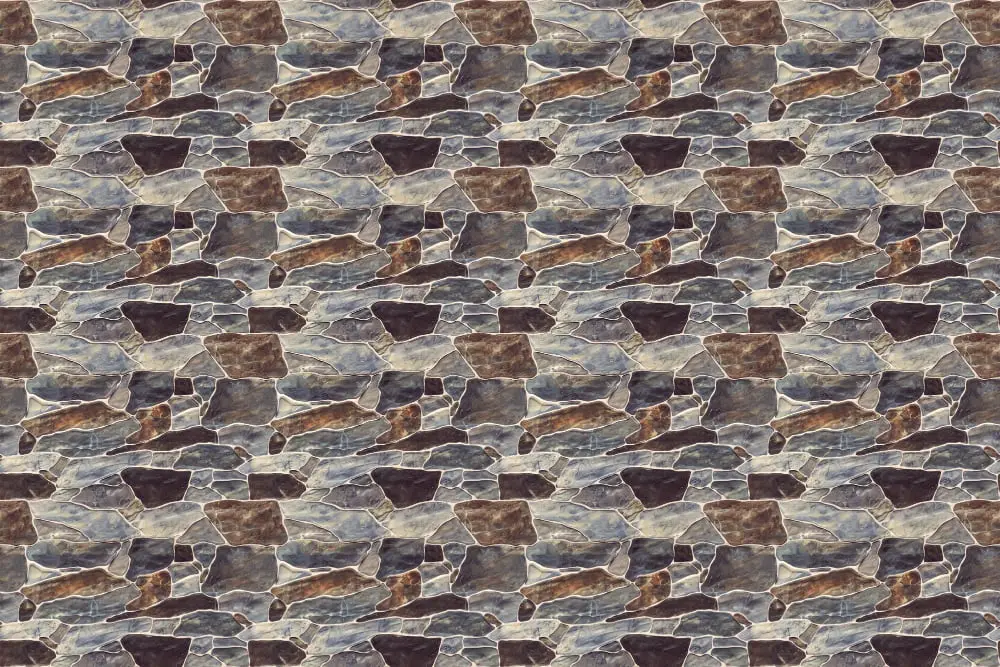
An Ashlar pattern offers a traditional and harmonious look that stands the test of time. With gray stone, which is often used, this siding brings an elegant charm that effortlessly complements any style of home.
In this ageless design, rectangular stones of varying sizes are meticulously arranged in a staggered pattern. This results in an attractive, symmetrical appearance that often leaves viewers in awe. A significant aspect that sets Ashlar uniquely apart is that although the process might look random, it’s not. Each stone is skillfully placed to create an organized yet spontaneous feel.
When choosing gray stone for Ashlar siding, consider its flexibility. This subdued hue suits a range of exteriors, capable of enhancing a modern townhouse or a stark white minimalistic home. Gray stone adds dimension and depth, providing a profound aesthetic effect.
Installing Ashlar pattern gray stone siding is a multi-step process that includes:
- Selecting your preferred shade of gray stone. Choosing the correct tone is crucial, as your siding’s color will significantly impact your home’s overall look.
- Carefully planning out the pattern. The unique layout of Ashlar requires meticulous planning to achieve the desired appearance.
- Proper installation, which includes preparing the surface, applying a waterproof barrier, installing a metal lath, applying a scratch coat, and finally, meticulously laying the stones.
When properly executed, Ashlar pattern gray stone siding lends any exterior an extraordinary aesthetic sophistication that both blends with and accentuates the natural surroundings.
Chiseled Edge Stone Siding
Accentuating the architectural beauty of any property, chiseled edge stone siding offers both sophistication and a raw aesthetic value. Its unique texture and contour lines, reminiscent of a stonemason’s handiwork, yield tremendous visual depth.
The siding’s distinctive patterns, resulting from chiseled edges, can vary in terms of shadow, dimension, and geometric interplay, providing ample opportunities for customization. As such, homeowners can select styles that match their preferred design aesthetic, whether modern or rustic, sleek or rugged.
With chiseled edge stone siding, durability is an inherent quality. The material can withstand harsh weather conditions, proving a sound investment for those concerned about longevity and maintenance costs. Simultaneously, its natural essence ensures a timeless, ageless charm, enhancing curb appeal.
This siding option is versatile in color range, from cool grays and blues to warm beige and browns. This palette diversity allows for harmonizing with the home’s existing color scheme, or providing a contrasting feature for bold design statement.
Furthermore, considering the installation of lighting can accentuate the depth and character of the chiseled edges, creating a striking night-time visual.
In terms of installation, while it might require a skilled tradesperson due to the stone’s weight and the precision necessary for the fitting process, the visual payoff is certainly worth the investment.
Ribbed Cut Siding With Unique Patterns
This type of siding has a unique appeal due to the distinctive patterns etched into the stone. The ribbed cuts create undulating lines that give surfaces an eye-catching texture. The depth created by this texture can add a dynamic quality to an otherwise static exterior.
1. Highly Versatile: The versatility of this siding style allows it to effectively create a focal point on a wall or to add subtle depth to a whole house exterior.
2. Range of Colors: Ribbed cut stone wiring is available in a wide variety of colors, enabling homeowners to select a hue that complements their exterior design.
3. Combines with Other Materials: It can be efficiently combined with other materials such as wood, metal, or glass for a contemporary look.
4. Installation Ease: Despite the intricate look, it is as easy to install as any other stone siding because the pattern is already carved into the stone.
5. Durable: Like all stone exteriors, it is highly resistant to the elements, providing longevity and durability.
Therefore, investing in ribbed cut siding with unique patterns can add more than just visual appeal. The siding will boost the overall aesthetic and endurance value of your home, making it a consideration for those seeking a blend of style and durability for their exteriors.
Coral Stone Siding for a Coastal Look

Coral stone’s inherent properties make it the ideal choice for achieving a coastal look. This type of siding lends a touch of the seaside to any home, reminiscent of sunlit beaches and charming coastal towns. It’s incredibly versatile and can be used in a range of architectural styles, whether you’re aiming for a quaint beach cottage aesthetic or a grand maritime estate.
Firstly, one significant advantage of coral stone is its weather resistance. It withstands exposure to salty sea air and harsh sun better than other materials, aiding in longevity.
Moving on, the material’s aesthetic appeal is undeniable. With its mix of soft cream, beige, and sandy hues, it mirrors the color palette of the coast, bringing an airy, relaxed feel to your exteriors.
Moreover, its texture adds depth and interest to your home’s facade. The rough, natural cuts of the stone used in siding create shadows and crevices that can catch the light and create visual intrigue.
Finally, consider its eco-friendliness. Coral stone is a naturally occurring material, making it an environmentally conscious choice for your siding needs. Its ability to blend seamlessly with outdoor landscapes helps promote harmony with nature, a core design principle for coastal style homes.
To incorporate coral stone siding effectively, you could consider hiring a professional contractor with experience in stone siding. Additionally, pair it with other coastal design elements like light woods, large windows, and nautical accents for a cohesive look. Be mindful of local building codes and regulations to ensure the project’s success.
Bluestone Siding for Cool Tones
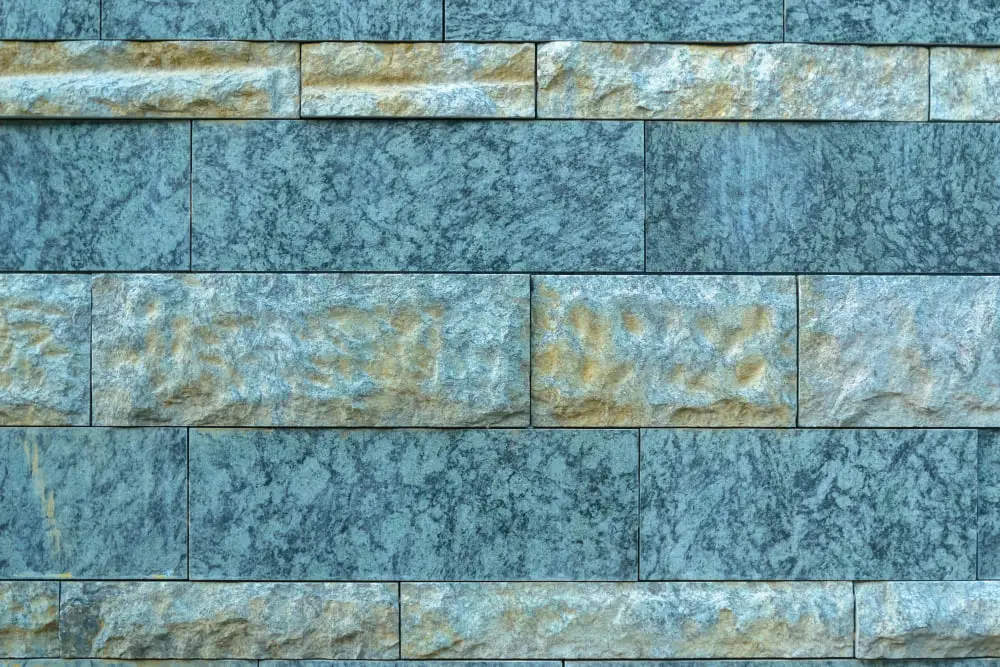
Suited particularly for homes with white, beige, or gray exteriors, bluestone provides a cool-toned contrast against warm hues. Its granular texture adds another layer of interest to the home’s facade. Compared to other stones, bluestone is durable, requiring minimal maintenance, thus preferred by homeowners aiming for longevity.
To begin bluestone siding installation, selecting the right tone that complements your home’s exterior color palette is the initial step. From light tan to deep blue, bluestone varies significantly. Prioritize ordering samples to ensure a match.
Next, identify the application method – whether you prefer a stacked style or a more rustic, irregular look can influence the stone cut. Ordering the stone pre-cut to your specifications or opting for a professional stone mason can save time and ensure the best fit.
To accentuate the siding, consider contrasting trim or complementary landscaping that will highlight the cool tones of the bluestone. Drought-resistant plants with silver or blue foliage, for instance, can tie the whole exterior together.
Remember that while bluestone is durable, it isn’t completely immune to wear and tear. Regular mild cleaning can help maintain it. Strong chemicals can often do more harm than good, a mild detergent and a soft brush should suffice.
Bluestone siding, with its striking cool tones and durable properties, can inject life and class into any exterior design. Tailoring the cut and surrounding elements to it ensure a cohesive aesthetic that appeals to the eye.
Cobbled Stone Siding for a Vintage Look
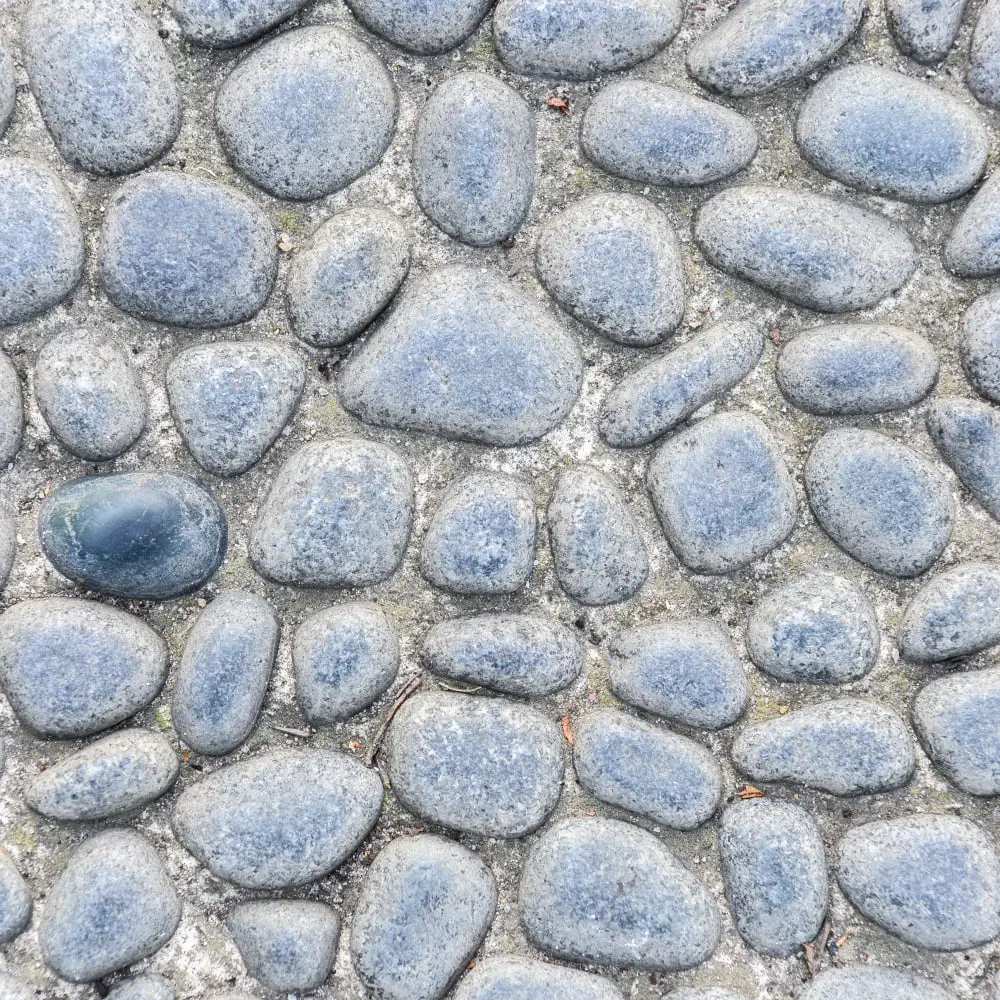
Cobbled stone siding embodies the true essence of old-world charm. Its distinctive vintage appeal resonates back to the era of cobblestone streets, making it an ideal choice for those who appreciate classic architecture.
The authenticity of this siding style is in its irregularity, with each stone varying significantly in size, shape, and color. It’s not uncommon to see a medley of grays, browns, buffs and sometimes even a hint of mossy greens in a single installation.
Properly installing cobbled stone siding requires careful design planning and professional expertise. The key steps include:
- Selecting the right type and color of stones: The options are vast – from granite to sandstone, each carrying a unique aesthetic. Picking a blend of hues can add depth and visual interest to your facade.
- Preparing the surface: This involves cleaning and fixing any structural issues on the wall to ensure a secure and durable siding application.
- Applying the mortar and stones: Each stone is laid one at a time and secured with mortar. This step requires precision and craftsmanship to create an appealing and sturdy surface.
- Grouting the joints: Once the stones are set, grout is filled in the spaces between, providing a finished and cohesive look to the wall.
- Sealing the stones: After the grout has had sufficient time to cure, the stones should be sealed to protect from staining and weathering.
Remember, owing to its distinctive nature, cobbled stone siding demands skilled installation to ensure its longevity and charm. Hiring an experienced professional is always recommended for the best results. Additionally, routine cleaning and proper maintenance are essential to preserve the siding’s history-laden character.
Cultured Stone Veneer Siding

Cultured stone veneer siding stands as one of the most versatile options for exterior design, combining the robust durability and excellent visual appeal of natural stone with an element of practicality. Our homes are our castles, and cultured stone veneer allows them to look the part while keeping construction and maintenance costs in check.
Cultured stone veneer is actually lightweight manufactured stone, which mimics the look of natural stone but at a fraction of the price. The manufacturing process includes molds made from real stone, assuring that every detail of natural stone is replicated. This is why it holds up in close visual inspection against natural stone.
Its advantages include:
- Unlike natural stone, cultured stone veneer is lighter, making it more manageable to work with.
- It’s excellent for walls and columns that wouldn’t be able to support the weight of a full-thickness solid stone.
- Cultured stone veneer lends itself well to a variety of styles and color variations. It can be used in patterns or mixed with other siding materials to provide visual interest and architectural detailing.
- Another benefit is that it’s easy to install. Many DIY enthusiasts find that they can tackle this project because it doesn’t require special tools or masonry skills.
- It’s a great insulator. It keeps the heat in during winter and out during summer, making your home more energy efficient.
- Last but not least, cultured stone veneer is maintenance-free. It does not require sealing, and the color won’t fade over time. It’s also resistant to damage from freeze-thaw cycles.
If you’re choosing cultured stone veneer siding, always work with an experienced professional to make sure your siding is installed properly. This is an investment that not only boosts your home’s curb appeal but will also withstand the test of time.
Brownstone Siding for an Urban Style

A defining characteristic of many urban neighborhoods, brownstone siding offers both classic elegance and durability. As it’s made from a type of sandstone, it has a naturally warm, earthy color that ranges from light tan to rich chocolate brown.
This type of siding materializes a timeless, aesthetic style that lends a sense of history to a property. It works seamlessly when creating an “old world” ambiance but can also complement modern designs, owing to its versatility.
For a more contemporary look, brownstone can be cut into clean, smooth tiles. For a rustic touch, it’s often left rough and textured. The charming appeal of irregular shapes and sizes used in traditional brownstone walls can truly make a property stand out.
Main features of brownstone siding include:
- Adapts to various architectural styles due to its neutral hues
- Provides excellent insulation, keeping the home warm in winter and cool in summer
- Resistant to weather conditions and pests, ensuring longevity
- Easy to maintain, requiring only occasional cleaning with a soft brush and mild detergent
- Eco-friendly, as it’s a natural, sustainable material
To refresh the look of existing brownstone siding, consider re-pointing (the process of renewing the external part of mortar joints) to enhance both its appearance and durability. You may also consider applying a weather-resistant sealer every few years for added protection and to retain the stone’s natural beauty.
If creating an authentic, urban style look is your home decor goal, brownstone siding might just be the perfect choice.
Related:
